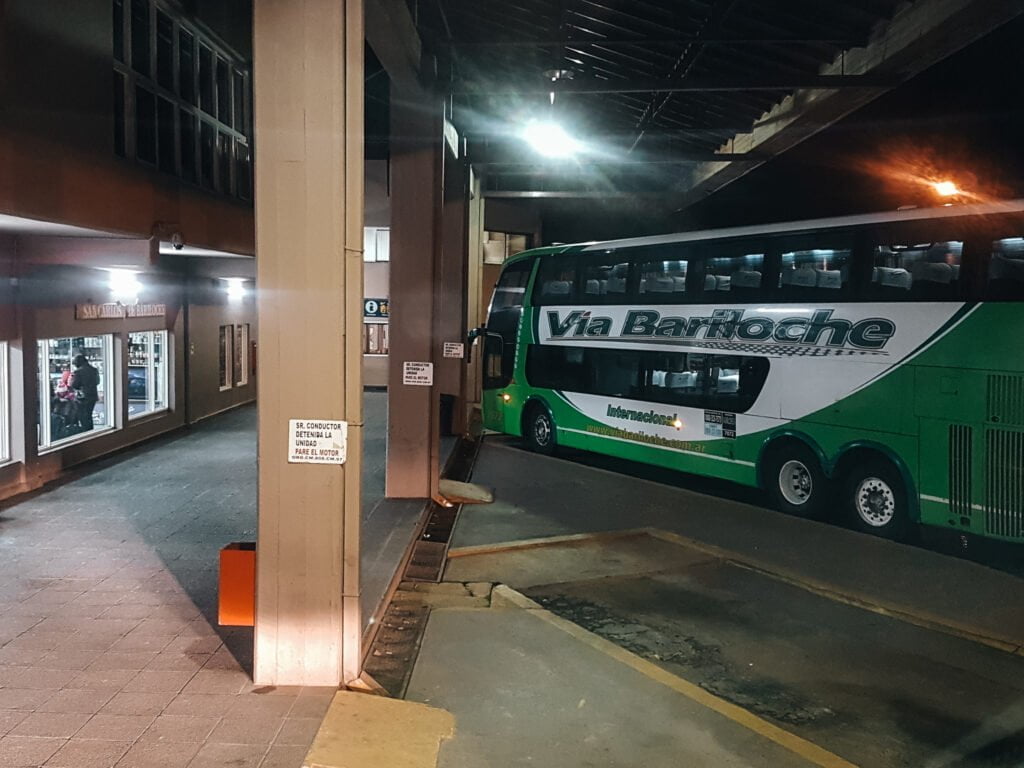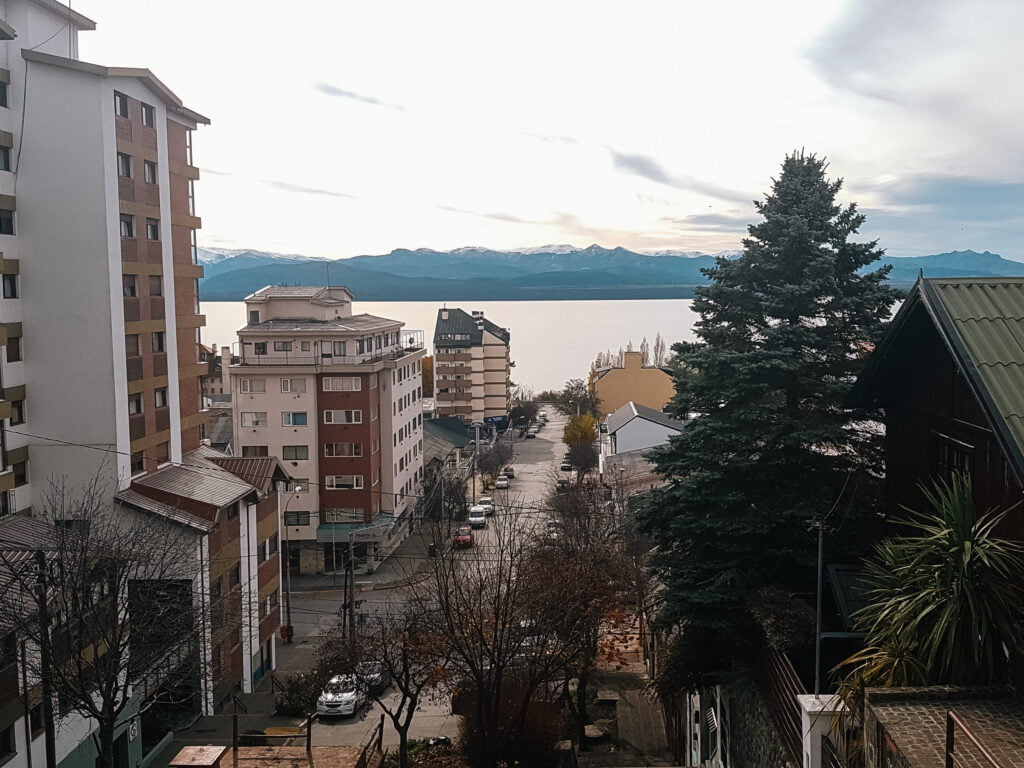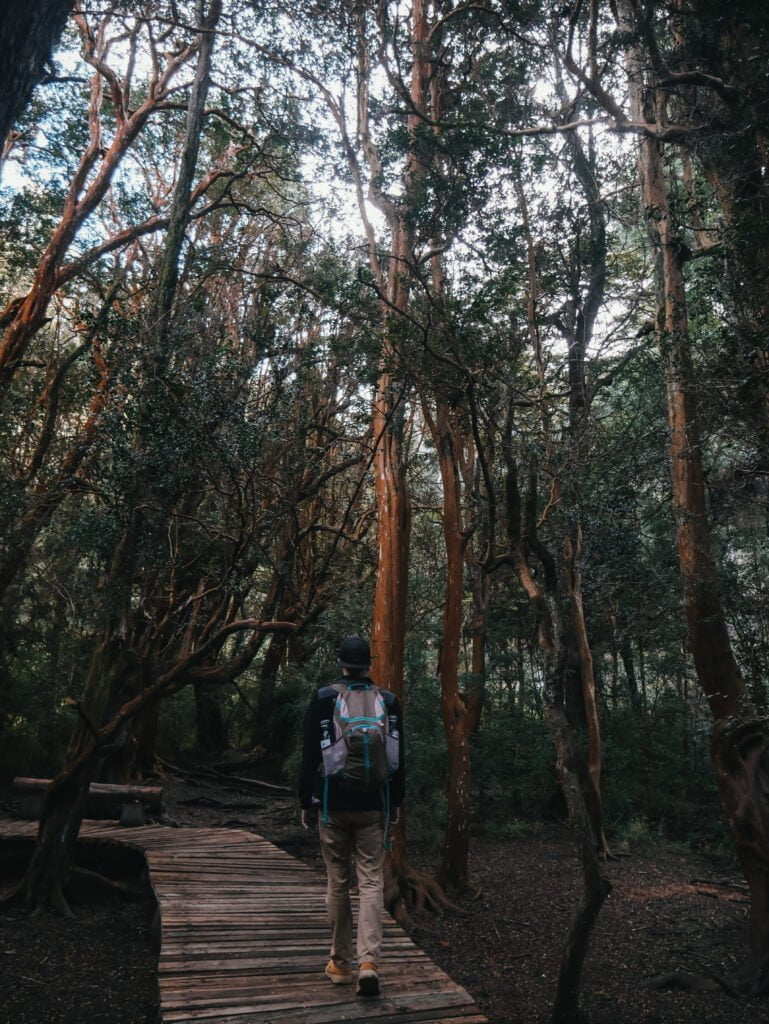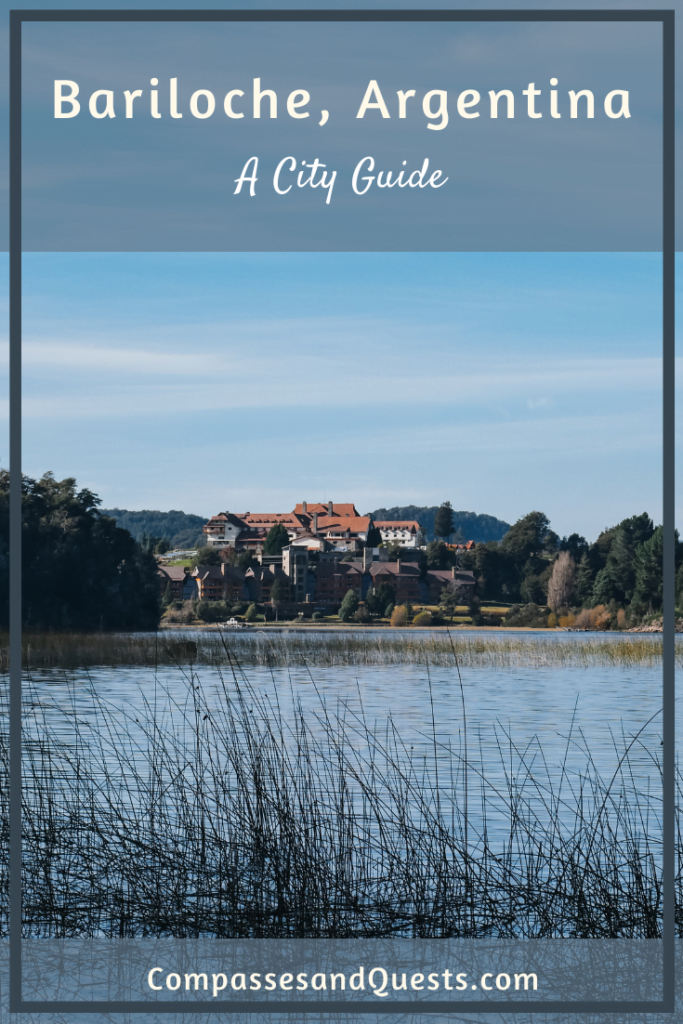San Carlos de Bariloche sits in the northern part of Argentina’s Patagonia region. The city is known for its unique blend of traditional and European culture and the absolutely stunning peaks and lakes around it. With plenty to do in Bariloche and the surrounding natural areas, it has become a popular stop among travelers visiting Patagonia. We put together this city guide with tips to help you plan a trip to this lovely city.

Disclaimer: This post contains affiliate links that help us keep the blog running. When used, we may earn a small commission at no additional cost to you. Learn more in our Terms of Service. We appreciate all the support!
When to Visit Bariloche
Bariloche is a great place to visit year round; however, your experience will vary depending on the season. So, it’s all a matter of the activities you plan to do and personal preference.
Winter in the southern hemisphere begins in June and ends in September. During this time, temperatures are coldest and there is more precipitation. You can expect heavier snow accumulation higher in the mountains. In fact, Bariloche is a popular ski destination!
In the summer, days are warmer, sunnier, and drier with temperatures reaching in the low 70s (F) on average. January and February are generally the warmest months with the least precipitation. The summer months are best for hiking, biking, and enjoying the many lakes in the area. Even in the summer, mornings and nights can be chilly, so bring some layers along.
Because Bariloche is popular for both winter and summer activities, it has multiple peak seasons. During the months of January, February, July, and August, prices are higher and accommodation, tours, and rentals are more likely to be sold out. So, it is important to plan and book in advance if possible.
The shoulder season months of May, June, October, and November are generally quieter and cheaper. We visited at the end of May and had overall sunny days with some scattered rain and brisk temperatures. Personally, we loved visiting during the low season when the trails and city were less busy.

Getting to Bariloche
Bariloche has a small airport. Teniente Luis Candelaria International Airport primarily serves flights from within Argentina, but also has some options to and from Chile. If you are coming from further abroad, you’ll likely pass through Buenos Aires first. The airport sits a bit out of town, but there are car rentals and taxis available to reach Bariloche. Bus 72 also runs to and from the airport.
Bariloche is commonly reached by bus. The city is a fairly popular hub, so there are some trains and many buses to and from quite a few destinations, including Puerto Montt, El Chaltén, San Antonio Oeste, El Bolsón, and more. Tickets can be booked online or at the various company offices at the terminal.
There are taxis and city buses to take you from the terminal into Bariloche. Note that you need a SUBE Card if you plan to ride the city buses. More on that in the section below.

Getting Around
Bariloche’s city center is very walkable with many shops, restaurants, and accommodation options in close vicinity. However, parts of the city are more sprawled out and there are many things to do outside of the city. There are taxis and public buses to get you around. There is no Uber in Bariloche.
We used the bus quite a lot during our time here. As mentioned above, you will need a SUBE card for the public bus. If you have already visited Buenos Aires, you may already have purchased the card. If not, there are various kioskos around Bariloche to purchase one and load it with money. There are also now supposedly ways to manage your SUBE card balance through an app. Learn more about using the card here.
How much money you need on the card depends on your destination. Due to the drastic fluctuation in the Argentine peso in the recent years, we recommend checking with your accommodation, kiosk staff, or other locals to let you know how much you should load to your card for your route.
Check here for bus routes and rough schedules.

Where to Stay in Bariloche
Bariloche has a ton of accommodation for a variety of travelers, from hostels and Airbnbs to luxurious lakeside lodges. We stayed in an Airbnb throughout much of our time in Argentina because it was often the most budget-friendly.
Below are some great hotel options.
Budget:
Hostel Like Quijote: dorms and double rooms with shared bathrooms and included breakfast.
Bariloche Hostel: dorms and double rooms with private bathrooms and included breakfast.
La Justina Hostel: dorms, double rooms (some with private bathrooms), and bungalows. Breakfast included.
Mid-Range:
Bariloche Home Suites: private apartments with equipped kitchens
Studio Bariloche: double rooms and studios with equipped kitchens.
Catalonia Sur Aparts-Spa: private apartments with equipped kitchens and included breakfast.
Peninsula Petit: double and king rooms with private bathrooms and included breakfast.
High-End:
Cabañas Puerto Pireo: double rooms to bungalows with private bathrooms and included breakfast.
Charming Luxury Lodge & Spa: suites – some with private saunas. Breakfast included.
Villa Beluno Hotel & Spa: If you’re looking to go all out, this is the hotel! Suites and included breakfast.

Where to Eat in Bariloche
There is no shortage of great places to eat at in Bariloche. Some cafés with great coffee and breakfast/brunch options include Vertiente and El Molinito Café. Panaderías like Vélo Bakery and Bäckerei are great places to grab some bread, pastries, empanadas, sandwiches, and other quick items to go.
For traditional Argentine cuisine, head to Salamandra Pulpería for steaks, empanadas, wines, some seafood, and more. Quiven is also a unique experience with the opportunity to sample a variety of local dishes with their tasting menus. Lamb is a common food in Patagonia, and El Patacón serves up a variety of lamb dishes along with pastas, chorizo, seafood, empanadas, and tasty desserts. For another traditional meal of parrilla, head to Alto el Fuego.
Some other great places to try are Ānima for steaks, pastas, and seafood, La Marmite for their fondue and trout, Il Gabbiano for Italian, and Punto Panorámico for a variety of pizzas, salads, pastas, sandwiches, and more. There are also many brewpubs and bars to grab a cold beer, burgers, and other bar eats. Some options include Belek, Konna Microcervecería, Chimi Bar, and Manush.
With strong Swiss and German influence, you’ll also find many chocolate shops. There are many chocolate shops and dessert cafes, such as Mamuschka, Ariel Maestro Chocolatero, and Rapa Nui, around town to grab dessert, sample some chocolates, and pick up an assortment.

Groceries
There are plenty of grocery stores in Bariloche, from the larger stores like La Anónima to smaller tiendas. At these supermarkets in the city, you’ll be able to buy snacks, produce, baked goods, and other typical food items along with basic toiletries, wine, beer, and liquor, some household items, etc.
Tours
Because Bariloche is surrounded by absolutely stunning lakes and rivers, there are ample activities to do in the area and tours to help you make the most of it. There are many operators offering a variety of excursions, including sailing and kayaking trips, river rafting and fishing, horseback riding, scenic drives around the area, trekking excursions, and more! There are also tours that focus more on the city, food, and cultural aspects of Bariloche.
Because this is a popular tourist destination, many tours companies have information and the option to book on their own sites online or on sites like Get Your Guide and Viator. There are also many tour operators located around the city center along calles Mitre and Francisco Pascasio Moreno. Additionally, you can visit the tourist center for more info.

Money
Bariloche has a few ATMs at banks around the city. The fees will vary depending on your specific card and transaction fees. Note that Argentina often has issues with ATMs running out of money.
Some places in Bariloche will accept USD; however, the rates will not be favorable, so we suggest exchanging currencies to Argentine pesos at a bank if needed. When exchanging, you will also not get the exact exchange rate, but it is good to know it at the time of your trip to make sure you aren’t getting completely ripped off.
Most places we went in Bariloche accepted credit card, so we chose to use this payment method the majority of the time. We carried some pesos in case we needed cash for tips and for some purchases at smaller shops, restaurants, and street stalls that did not accept card.
Like this Post? Pin it!




